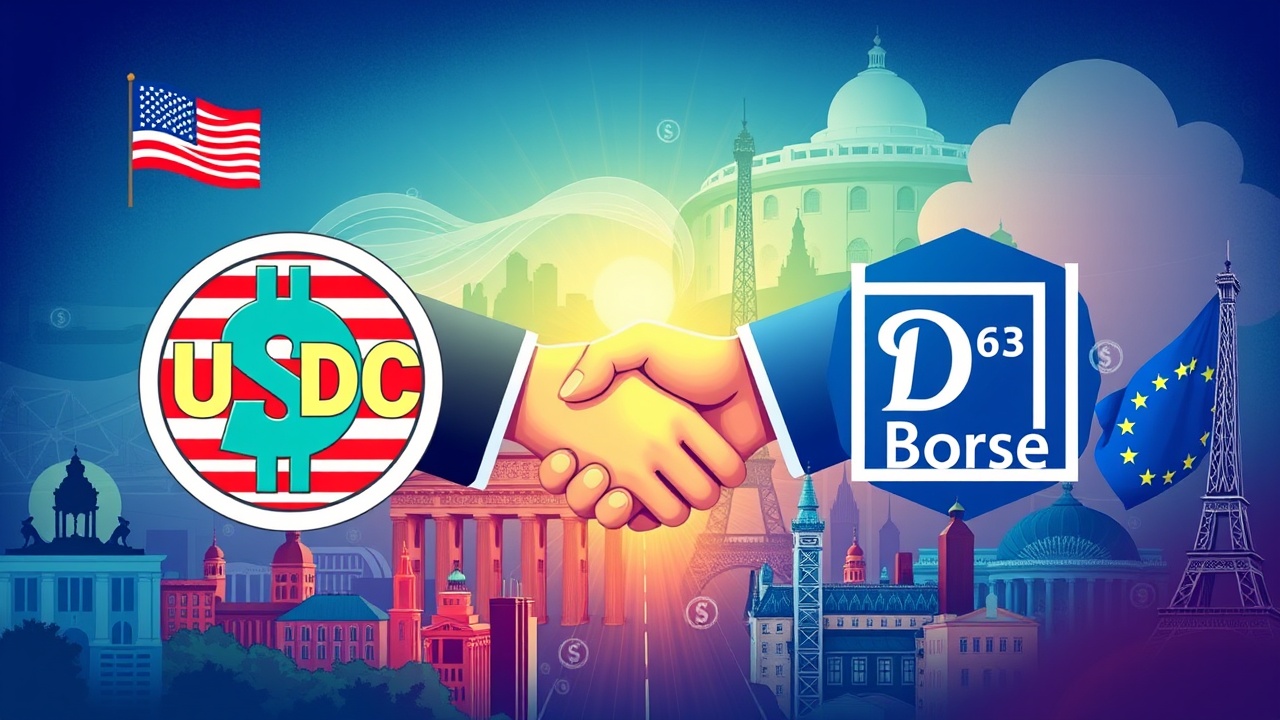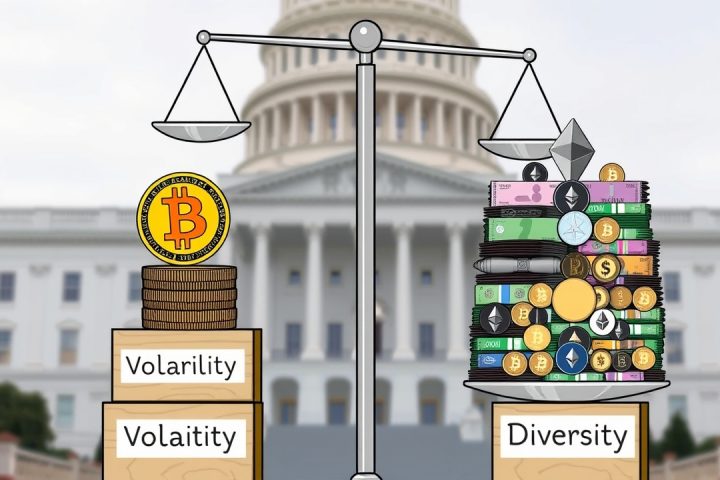Deutsche Börse Partners with Circle to Enhance Stablecoin Adoption
In a significant move to enhance the adoption of stablecoins across European markets, Deutsche Börse has entered into a partnership with Circle, the company behind the USDC stablecoin. This collaboration, formalized through a memorandum of understanding, aims to integrate Circle’s stablecoin solutions within Deutsche Börse’s financial infrastructure.
Focus on EURC and USDC
Specifically, the focus will be on Circle’s euro-pegged EURC and dollar-pegged USDC, facilitating their listing and trading on the digital exchange 3DX and through Crypto Finance, both subsidiaries of Deutsche Börse.
Regulatory Landscape and Challenges
This announcement comes at a precarious time, as discussions are arising among European regulators about potentially banning multi-issuer stablecoins. This regulatory uncertainty could have profound implications for firms such as Circle and Paxos. Reports indicate that the European Systemic Risk Board (ESRB), which operates under the auspices of the European Central Bank, has suggested a prohibition on such stablecoins, signaling increasing scrutiny of the risks they could pose in various areas including legal and operational aspects.
MiCA Framework and Compliance
Given the backdrop of these developments, the partnership between Deutsche Börse and Circle is notably facilitated by the European Union’s Markets in Crypto-Assets Regulation (MiCA). The MiCA framework is set to come into full force by late 2024, and Circle’s proactive compliance with its guidelines, as highlighted by Circle’s co-founder Jeremy Allaire, positions the company favorably within the evolving regulatory environment in Europe. Allaire emphasized the intention to enhance the operational landscape for banks, asset managers, and the broader market through the use of regulated stablecoins such as EURC and USDC.
Custody Services and Industry Responses
In addition to facilitating trading on 3DX, this alliance aims to streamline custody services via Clearstream, Deutsche Börse’s post-trade business entity, utilizing Crypto Finance as a sub-custodian for added security and efficiency.
Meanwhile, while Circle is advancing its compliance efforts, Tether, the issuer of the widely utilized USDt stablecoin, has notably chosen not to adhere to the MiCA regulations, citing challenges related to local reserve requirements. This decision underscores the varied responses within the industry as it navigates a rapidly changing regulatory landscape.
Broader Trends in Stablecoin Integration
This recent partnership is indicative of a broader trend where local firms are increasingly pursuing stablecoin integration, despite mixed feelings regarding MiCA’s effectiveness, as noted by officials in the industry. Just recently, Société Générale-Forge, the cryptocurrency unit of the French banking giant, announced the launch of its own stablecoins— USD CoinVertible (USDCV) and EUR CoinVertible (EURCV)—within decentralized finance frameworks such as Morpho and Uniswap, reflecting the growing interest in robust stablecoin solutions across Europe.




